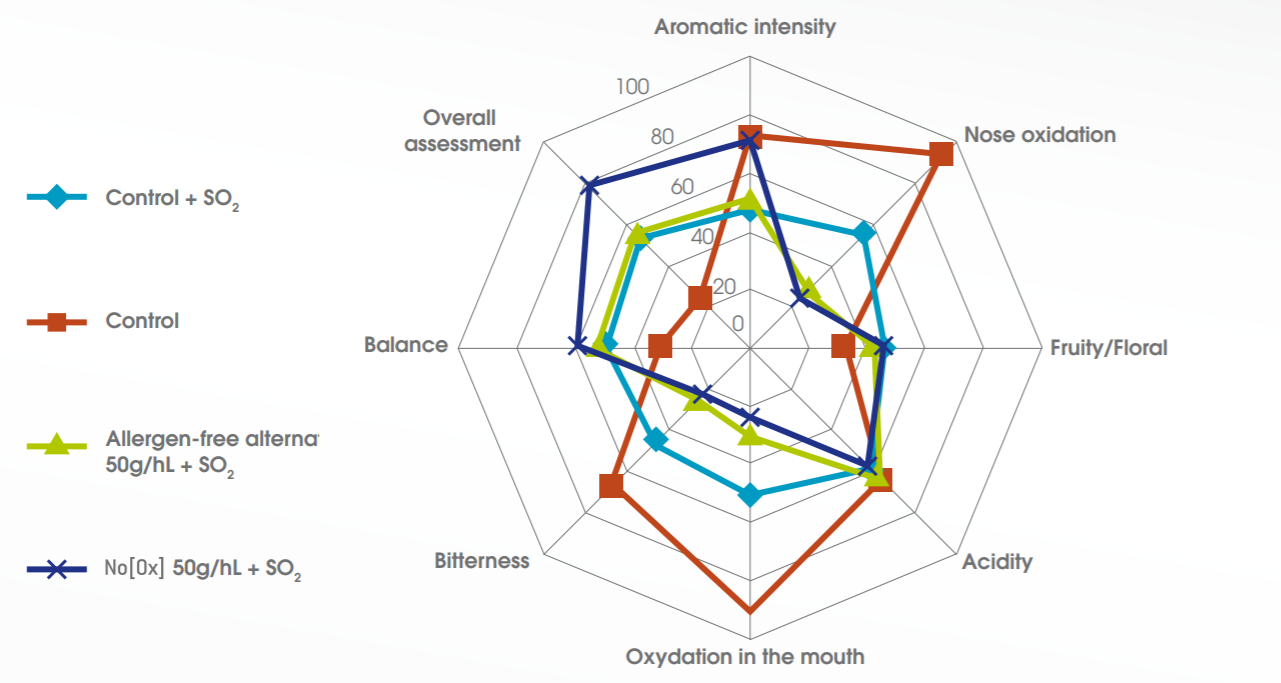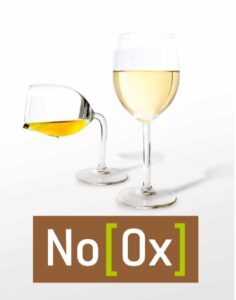Oxidation of wine remains one of the major problems in oenology this century. Oxidation of wine always results in a loss of cleanness and fruitiness (‘faded’ wines, ‘lacking freshness’, etc.) with the appearance of bitter notes and browning of wines. This goes against the expectations of today’s consumers: fresh, crisp, clean wines with a floral or fruity expression, true to the original product.
The mechanisms explaining oxidation are well described in the literature1. Whether in the must or the wine, the mechanisms as well as the molecules involved are similar. Three entities contribute to oxidative deterioration: polyphenols (and more particularly ortho-diphenols that are linked with the appearance of browning2), oxygen and catalysts.
Catalysts may be chemical (cupric or ferric salts) or biological (polyphenol-oxidases, for example laccases, are enzymes that use copper; without catalysts, the oxidation of polyphenols is unlikely).

All these reactions contribute to the formation of derivatives participating in reducing fruity or floral notes and the appearance of heavier notes (honeyed, preserves, etc.).
Anti-oxidant properties in the broader sense can be associated with any activity reducing the factors listed above and particularly the transition metals copper and iron as well as polyphenols.
No[Ox] combats oxidation of Wine
No[Ox] is a unique and innovative technological aid, made from plant polysaccharides, free from allergenic or synthetic products. Its effectiveness and fast action combat oxidative by-products, both in the must and in the wine, while preserving the intrinsic qualities of the initial product. No[Ox] eliminates the brown colour that causing visual deterioration of wine. It softens caramel and madeira notes, giving the wine freshness and eliminates plant and bitter notes often associated with oxidation problems.
No[Ox] combats tinting faults due to oxidation of Wine
The chelating effect of fungal polysaccharides eliminates copper and iron, specific catalysts of all oxidation processes. The test below assessed the yellow tint (OD420nm) of a white wine. It demonstrates the indisputable curative action of No[Ox] on the colour of oxidised wine.
![Sperimentazione con No[Ox]](https://www.perdomini-ioc.com/wp-content/uploads/2020/05/3_NoOx-test-en.png)
No[Ox] combats organoleptic faults due to oxidation of Wine
No[Ox] softens the bitter taste and oxidation notes in wine while preserving the sensory properties of the initial product. Here is an example: on a blend of Pinot Noir and chardonnay particularly affected by oxidation. We compared the action of No[Ox] against an ‘allergen-free alternative’ based on PVPP, plant protein and bentonite. Before treatment, the wine had distinctive oxidation notes to both the nose and the mouth accompanied by a bitterness typical of intense oxidation and a lack of fruity/floral character.
Sulphur dioxide treatment (control + SO2) markedly reduced the fault although not annihilating it completely. Each of the 2 formulations tested (No[Ox] and «allergen free alternative») was able to change the quality of the wine from very mediocre to one appreciated by the panel. However, wines treated using the ‘allergen-free alternative’ formulation were scored as being too weak, too hollow and unbalanced, unlike treatment with No[Ox] which fully preserved the sensory characteristics of the wine.

Blind tasting performed by a panel of eight experts.
The overall assessment of the tasters was clear. 7 out of 8 panellists identified No[Ox] is the better formulation.
Bibliography
- D. Fracassetti et al., 2011. Quantification of glutathione, cathechin and caffeic acid in grape juice and wine by a novel ultra-performance liquid chromatography method. Food Chemistry , 128, 1136-1142.
- H. li et al ., 2008. Mechanism of oxidative browning of wine. Food Chemistry, 108, 1-13.






